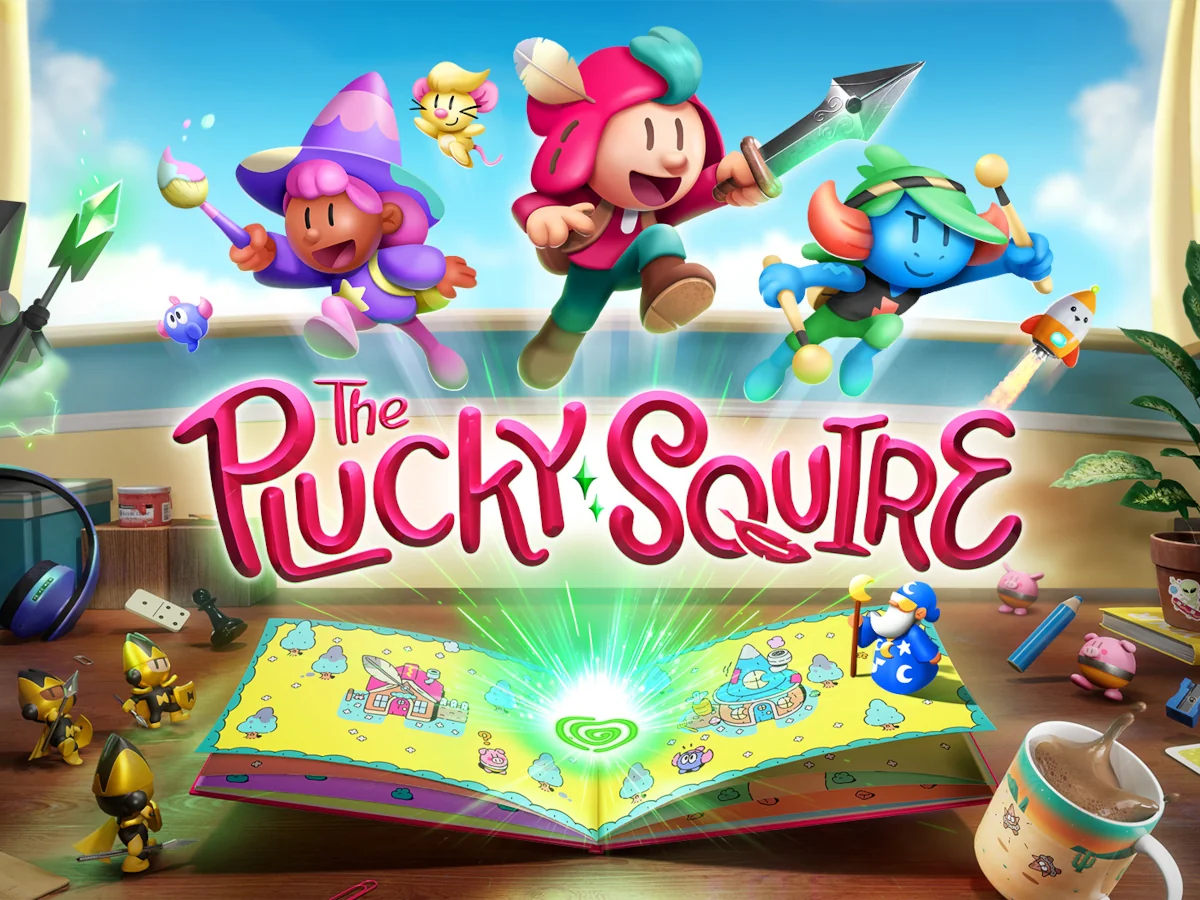– Advertisement –
A Delightful Surprise
The Plucky Squire is a delightful and imaginative adventure that takes players on a unique journey through a world filled with storybook magic and surprising twists. Developed by All Possible Futures and published by Devolver Digital, this game stands out with its beautiful art style, engaging gameplay mechanics, and an innovative approach to storytelling. In a market crowded with big-budget titles and familiar formulas, “The Plucky Squire” brings a refreshing, charming experience that’s hard to resist. Let’s break down what makes it so
enjoyable and where it slightly falls short.
Story and Concept
One of the game’s strongest points is its unique concept. “The Plucky Squire” centers around Jot, a brave little hero, whose life unfolds within the pages of a storybook. The story takes place in a charming, illustrated children’s book world that’s deceptively simple yet packed with emotional depth. As players progress, they discover that Jot is not limited to the confines of the book; he can break out into the real world, transitioning from 2D storybook landscapes to 3D environments in the room where the book resides.
This clever twist on the concept of an interactive storybook is both nostalgic and fresh, inviting players to explore a world that seems to leap off the pages. The premise of moving between 2D and 3D worlds isn’t just a gimmick; it’s woven into the gameplay in a way that feels seamless and natural, creating a narrative that’s immersive and memorable.

Gameplay and Mechanics
“The Plucky Squire” combines platforming, puzzle-solving, and combat in a way that feels intuitive and rewarding. The 2D segments involve classic platforming, reminiscent of games from the early days of gaming, but with modern polish. Controls are smooth and responsive, making the 2D sections a joy to navigate. The gameplay mechanics in these sections are straightforward but fun, with puzzles that feel challenging enough to engage without causing frustration.
The magic really happens when Jot jumps out of the storybook and into the 3D world. This transition feels like stepping through a portal, as players leave the flat world of the storybook and find themselves in a lively, three-dimensional environment. The 3D segments add another layer of depth, with environmental puzzles that are well-designed and satisfying to solve. Objects that seemed like mere background details in 2D become interactive elements in 3D, creating an experience that encourages exploration and curiosity.
One minor drawback is the occasional inconsistency in difficulty. Some puzzles are surprisingly simple, while others can feel disproportionately challenging. It’s not enough to detract significantly from the experience, but it’s a slight blemish on an otherwise well-balanced gameplay experience.
Visuals and Art Style
The art direction in “The Plucky Squire” is nothing short of stunning. The game’s visual style is heavily inspired by children’s books, with hand-drawn illustrations that are vibrant and full of character. Every scene feels like a page out of a storybook, brimming with whimsical details and a cozy color palette that evokes nostalgia.
The transition between 2D and 3D is especially impressive from a visual standpoint. When Jot steps out of the book, the room he enters feels like a delightful combination of real-world elements and fairy-tale charm. Textures, lighting, and shading are all handled beautifully, creating a sense of immersion that makes you feel like you’re part of this magical world.
However, while the game’s visuals are charming, some minor graphical issues occasionally arise, especially during the transitions between 2D and 3D. These glitches are mostly cosmetic and don’t significantly impact gameplay, but they can briefly break the sense of immersion.

Sound and Music
The audio design in “The Plucky Squire” is another highlight. The soundtrack is whimsical and uplifting, perfectly complementing the game’s lighthearted tone and storybook aesthetic. The music changes dynamically as players move between 2D and 3D, enhancing the sense of exploration and adding to the immersive experience.
Sound effects are equally well-crafted, from the rustling of pages in the book to the soft hum of ambient noise in the 3D world. Every sound feels thoughtfully placed, adding subtle layers of depth to the game’s already rich atmosphere. However, the game lacks voice acting, which might have added another layer to the narrative. While this choice keeps the focus on the storybook feel, a bit of narration could have further enhanced the storytelling experience.
Replayability and Length
The Plucky Squire is a relatively short game, with an estimated playtime of around 6 to 8 hours. This length feels appropriate for the story it wants to tell, but players looking for a longer experience might feel a bit shortchanged. There is some replayability due to hidden collectibles and secrets, but not enough to warrant multiple playthroughs for most players.

Conclusion
Overall, “The Plucky Squire” is an amazing, imaginative experience that showcases the magic of storytelling in a way that’s rarely seen in games. Its unique 2D-to-3D mechanic is more than a novelty; it’s a fundamental part of the gameplay that enhances the experience, making it both memorable and enjoyable. The game’s art, music, and concept come together beautifully, creating a world that feels alive and inviting.
While it has minor flaws, such as occasional difficulty spikes and some graphical glitches, these issues are small in comparison to the charm and creativity on display. For players seeking a fresh, story-driven experience, “The Plucky Squire” is a must-play that will leave you smiling from start to finish.









